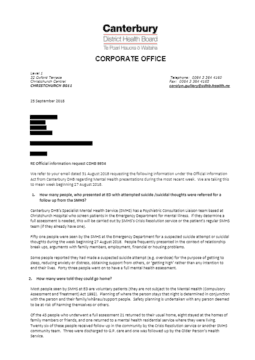Response to official information request
For week beginning 27 August 2018:
- How many people, who presented at ED with attempted suicide/suicidal thoughts were referred for a follow up from the SMHS?
- How many were told they could go home?
- How many were given a prescription for medication and what kind of medication were they prescribed?
- Of those referred for follow up, what was the nature of the follow up, and what was the outcome of the follow up?
- How many were admitted as a patient to SMHS?

